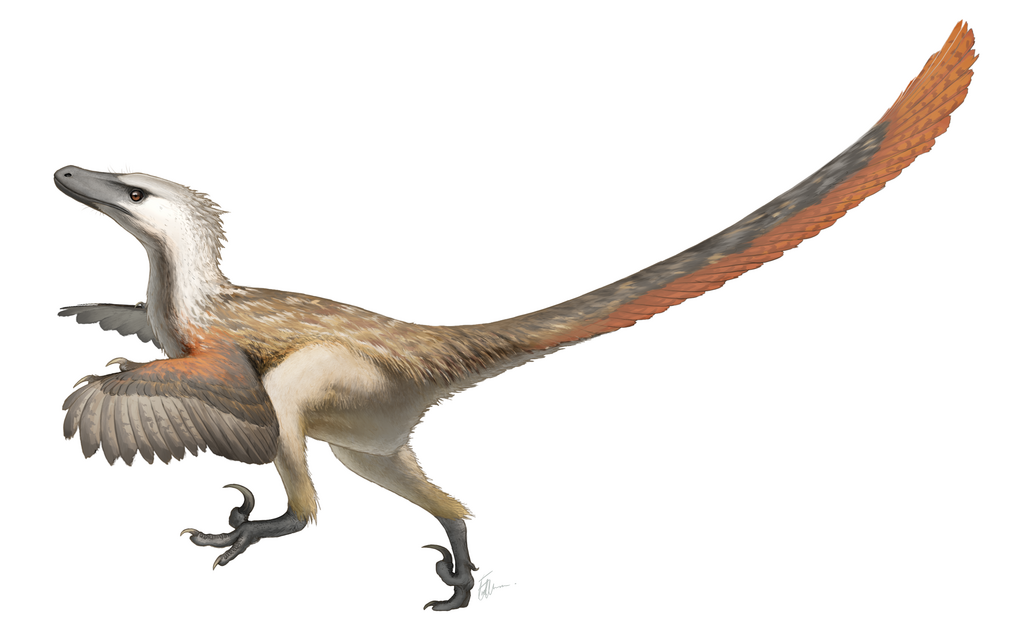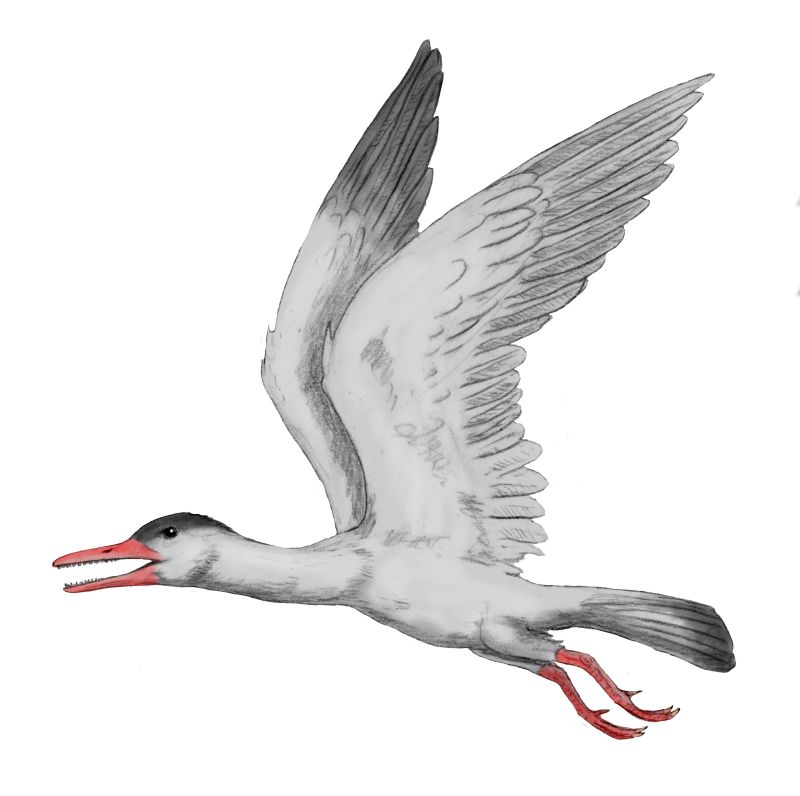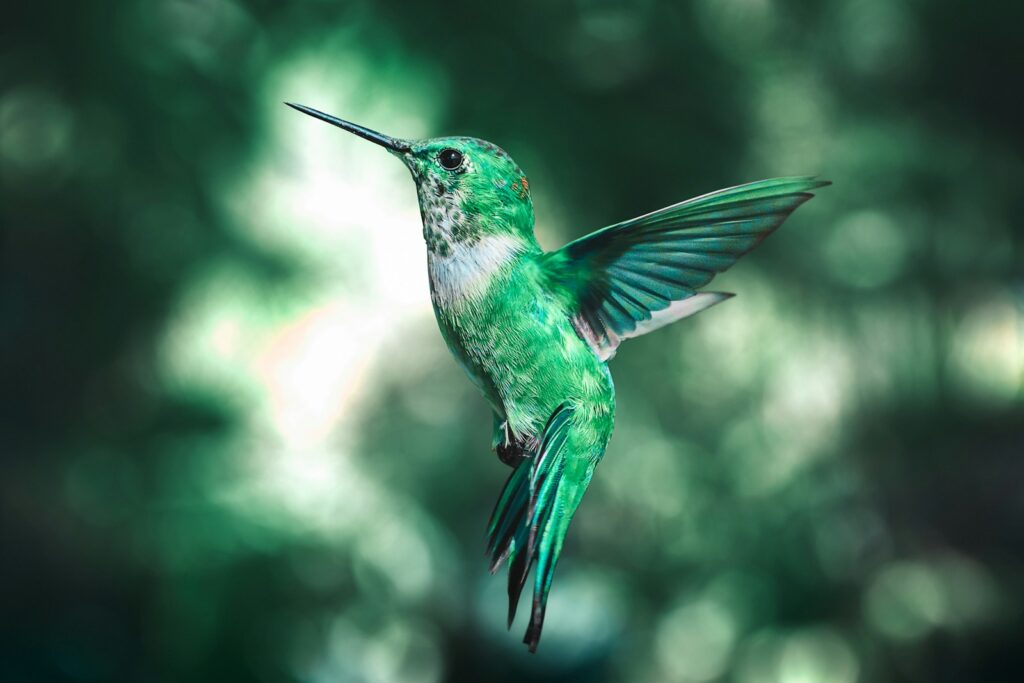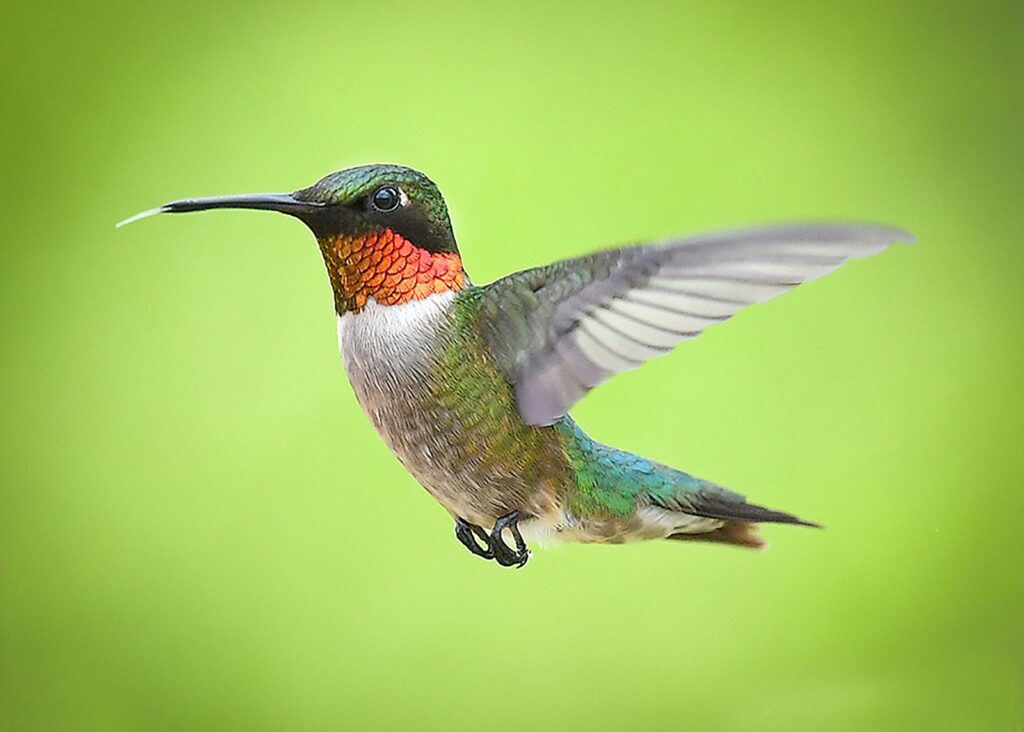In the dramatic story of life on Earth, few evolutionary tales are as fascinating as how dinosaurs survived extinction through their avian descendants. The asteroid impact 66 million years ago wiped out all non-avian dinosaurs, yet their legacy continued through birds—the only dinosaur lineage that persists today. Central to this survival story is the evolution of beaks, a remarkable adaptation that transformed dinosaur anatomy and opened new ecological niches. This feature proved crucial during the mass extinction event and continues to drive avian diversity in our modern world. Let’s explore how the humble beak—a seemingly simple structure—played such a pivotal role in one of evolution’s greatest survival stories.
The Dinosaur-Bird Connection: Setting the Evolutionary Stage

The relationship between dinosaurs and birds represents one of paleontology’s most profound discoveries. Birds didn’t merely evolve after dinosaurs; they are dinosaurs—specifically, they descended from a group of two-legged theropod dinosaurs that included the famous Velociraptor and Tyrannosaurus rex. This evolutionary connection was first proposed by Thomas Henry Huxley in the 1860s after examining the remarkable fossil Archaeopteryx, which displayed both reptilian and avian features. Modern evidence, including skeletal structures, egg-laying behaviors, and even the presence of feathers in many non-avian dinosaurs, has firmly established this relationship. The evolution from toothy predators to beaked birds represents a gradual transformation that occurred over millions of years, with the beak emerging as a defining innovation that would ultimately help ensure dinosaur survival through their avian descendants.
The Anatomy of Transition: From Teeth to Beaks

The transition from toothed jaws to beaks didn’t happen overnight but unfolded through incremental evolutionary changes. Early theropod dinosaurs possessed rows of sharp teeth specialized for catching and consuming prey. Paleontological evidence reveals that certain theropod lineages began developing keratin-based coverings on portions of their jaws, creating proto-beaks that coexisted with teeth. The fossil record shows this transition clearly in species like Limusaurus, which had teeth as juveniles but lost them as adults, developing more beak-like structures. Another crucial transitional fossil, Ichthyornis from the Late Cretaceous period, possessed both a partial beak at the tip of its snout and teeth in the back of its jaws. This anatomical shift required significant changes to the underlying skull structure, jaw muscles, and feeding behaviors. The complete replacement of teeth with fully developed beaks represented an evolutionary turning point that would later prove advantageous during times of environmental crisis.
Functional Advantages: Why Beaks Beat Teeth

Beaks offered several significant advantages over teeth that likely contributed to the survival of avian dinosaurs. Perhaps most crucially, beaks are lightweight structures composed primarily of keratin—the same protein found in hair and nails, making them considerably lighter than tooth-filled jaws. This weight reduction proved valuable for flight-capable species, improving their aerial efficiency. Beaks also grow continuously throughout a bird’s life, allowing for constant repair of wear and damage without the energy-intensive process of replacing teeth. From a dietary perspective, beaks can be rapidly adapted through evolution to specialized feeding niches, from the crushing power of seed-eating finches to the filtering apparatus of flamingos. Additionally, beaks require less calcium than teeth, potentially giving beaked species an advantage during periods of food scarcity when essential minerals might be limited. These functional benefits made beaks an extraordinarily versatile tool that opened numerous ecological opportunities.
Early Beak Evolution: Precursors in Non-Avian Dinosaurs

The evolution of beaks didn’t start with birds but began millions of years earlier in their dinosaurian ancestors. Several non-avian dinosaur groups independently evolved beak-like structures, demonstrating the adaptive advantage of this feature. Ceratopsians like Triceratops had a beak-like structure at the front of their jaws, ideal for cropping tough plant material. Ornithomimids, the “ostrich-mimics,” possessed toothless beaks that likely supported omnivorous diets. Perhaps most relevant to bird evolution, the oviraptorids—close relatives of birds—developed fully formed beaks and lost their teeth entirely. These dinosaurs, once thought to be egg thieves (hence their name “egg thief”), were later discovered to be nesting on their eggs, further demonstrating their bird-like characteristics. The presence of beaks in these diverse dinosaur lineages shows that this adaptation wasn’t unique to the bird line but represented a broader evolutionary trend that provided significant advantages in various ecological contexts long before the extinction event.
Dietary Diversification: How Beaks Opened New Food Sources

The evolution of beaks played a crucial role in opening new dietary opportunities that would prove vital for survival. Traditional toothed jaws limited dinosaurs to certain feeding strategies, but beaks could be quickly modified through natural selection to exploit diverse food resources. Early birds with specialized beaks could access seeds, fruits, nectar, and insects that might have been inaccessible to their toothed relatives. This dietary flexibility became particularly important during the aftermath of the Cretaceous-Paleogene extinction event when traditional food webs collapsed. Fossil evidence indicates that seed-eating birds with robust beaks were among the survivors, likely because plant seeds represented an energy-rich food source that remained available even when other resources disappeared. The ability to crack open seeds, dig for buried insects, probe flowers for nectar, or filter tiny organisms from water all depended on beak specializations. This dietary diversification allowed avian dinosaurs to occupy ecological niches that remained viable even during catastrophic environmental changes, contributing significantly to their survival when other dinosaur lineages perished.
The Mass Extinction Event: Why Birds Survived When Other Dinosaurs Perished

The asteroid impact that struck Earth 66 million years ago triggered a catastrophic chain of environmental effects—global wildfires, acid rain, temperature fluctuations, and an extended “impact winter” when dust blocked sunlight. These conditions devastated ecosystems worldwide, eliminating approximately 75% of all species, including all non-avian dinosaurs. Yet birds—birds-the avian dinosaurs—managed to survive this apocalyptic scenario. Their beaks played a crucial role in this survival story by enabling dietary flexibility when food chains collapsed. Many surviving bird lineages were ground-dwelling seed-eaters with specialized beaks capable of cracking open seeds, a critical food source that remained viable when vegetation died off. The lightweight nature of beaks also contributed to smaller body sizes in birds compared to their larger dinosaur relatives, reducing their overall caloric requirements. Smaller animals with lower food needs had better survival odds during this period of extreme scarcity. Additionally, some research suggests that the forest-dwelling habitats of many early birds may have provided shelter from the initial impact effects, giving them a survival advantage during the earliest and most severe phase of the extinction event.
Ecological Recovery: Birds as Pioneers in Post-Extinction Ecosystems

After the mass extinction event, surviving bird lineages played a pivotal role in reestablishing ecosystem functions in the devastated world. Their beaks, adapted to various food sources, allowed them to act as seed dispersers, pollinators, and insect controllers—all critical ecological services. The fossil record shows that bird diversity began expanding relatively quickly in the early Paleogene period, with new beak forms evolving to exploit the ecological opportunities in a world largely emptied of competitors. Water birds developed specialized filter-feeding beaks to take advantage of aquatic resources, while others evolved hooked beaks for capturing the small mammals that were also diversifying during this period. This adaptive radiation was made possible by the inherent plasticity of beak development, which allowed for rapid evolutionary modifications in response to new selection pressures. The diversification of beaks during this recovery period established many of the major bird lineages we recognize today and helped rebuild complex ecosystem relationships. Birds essentially became the ecological heirs to their extinct dinosaur relatives, using their specialized beaks to occupy niches throughout the recovering global ecosystems.
Developmental Biology: How Dinosaur Genes Built Bird Beaks

The transformation from dinosaur jaws to bird beaks is not just a matter of fossil evidence but is written in the genetic code of modern birds. Developmental biologists have identified several key genes, including BMP4 and CaM, that regulate beak formation during embryonic development. Remarkably, these same genetic pathways existed in non-avian dinosaurs but were repurposed to create the diverse beak shapes we see in birds today. Laboratory experiments have demonstrated that subtle changes in the expression of these genes can dramatically alter beak morphology, explaining how natural selection could rapidly modify beak shapes to meet changing environmental challenges. The embryonic tissue that forms the beak, called the neural crest, shows exceptional plasticity in birds, allowing for the remarkable diversity of beak shapes and sizes. From the needle-like beak of a hummingbird to the massive crushing bill of a macaw, these variations stem from the same developmental toolkit inherited from dinosaur ancestors. This genetic continuity provides further evidence of the evolutionary link between dinosaurs and birds, showing how ancient genetic programs were modified rather than invented anew to create the specialized feeding apparatus that helped birds survive.
Darwin’s Finches: The Classic Example of Beak Evolution in Action

No discussion of beak evolution would be complete without examining Darwin’s finches from the Galápagos Islands, which provide perhaps the most famous example of how beak adaptations drive species diversification. These birds, all descended from a single ancestor that reached the islands a few million years ago, evolved different beak shapes specialized for particular food sources. Large ground finches developed deep, powerful beaks for cracking hard seeds, while cactus finches evolved longer, pointed beaks perfect for extracting nectar and insects from cactus flowers. The remarkable aspect of these adaptations is how quickly they can evolve in response to environmental changes. During drought periods when only hard seeds remain available, research has documented measurable changes in beak dimensions within just a few generations. The genetic basis for these rapid adaptations has been traced to specific genes like ALX1, which controls beak shape. While these finches evolved long after the dinosaur-bird transition, they demonstrate the same evolutionary principles that allowed beaked dinosaurs to survive extinction—the ability to rapidly adapt feeding structures to changing food resources through natural selection acting on genetic variations.
Modern Bird Diversity: The Legacy of Dinosaur Survival

Today’s birds represent the most diverse group of land vertebrates, with over 10,000 species occupying virtually every terrestrial ecosystem on Earth. This extraordinary diversity largely stems from variations in beak morphology that allow birds to exploit specific ecological niches. Hummingbirds possess needle-like beaks perfectly adapted for sipping nectar from flowers, while hawks have sharp, hooked beaks designed for tearing meat. Pelicans have developed pouch-like beaks for scooping fish, and woodpeckers feature chisel-like structures reinforced to withstand the impacts of drilling into wood. Each specialized beak represents an evolutionary solution to a specific feeding challenge, demonstrating how this single anatomical feature has facilitated the occupation of countless ecological roles. This diversity represents the continued evolutionary success of the dinosaur lineage that survived extinction through its beaked descendants. While most people don’t immediately connect the chickadee at their feeder with Tyrannosaurus rex, these modern birds carry forward the dinosaurian legacy, modified through millions of years of evolution but still bearing the fundamental adaptations, particularly the beak, that allowed their ancestors to endure when all other dinosaur lineages perished.
Conservation Implications: Protecting Dinosaur Descendants Today

Understanding birds as living dinosaurs adds a profound dimension to modern conservation efforts. When we protect endangered bird species, we’re preserving the last surviving branch of the dinosaur evolutionary tree. Unfortunately, human activities have driven numerous bird species to extinction, effectively continuing the dinosaur extinction event that began 66 million years ago. Habitat destruction, climate change, invasive species, and direct persecution threaten the remarkable diversity of beak adaptations that evolved over millions of years. Conservation biologists are particularly concerned about specialized feeders with unique beak adaptations, such as the Hawaiian honeycreepers, many of which have already gone extinct due to human impacts. These birds evolved distinct beak shapes matched to specific native flowers, demonstrating evolution’s precision in crafting beaks for particular ecological roles. The loss of such specialized species represents the erasure of evolutionary innovations millions of years in the making. By recognizing birds as dinosaur descendants, we gain a deeper appreciation for what’s at stake in bird conservation—the protection of not just modern species but the last surviving lineage of animals that once dominated Earth for over 150 million years.
Future Evolution: How Bird Beaks Continue to Adapt

Evolution hasn’t stopped, and bird beaks continue to adapt to changing environmental conditions today. Researchers have documented contemporary examples of rapid beak evolution in response to human-induced environmental changes. House finches introduced to North America have shown measurable changes in beak size and shape as they adapted to new food sources in urban environments. Great tits in the United Kingdom have evolved longer beaks over just a few decades, possibly in response to the popularity of bird feeders. Climate change is also driving evolutionary responses, with studies showing changes in beak size in some species as they adapt to changing temperature regimes—larger beaks can help dissipate heat in warmer environments. Perhaps most concerning, some birds are showing beak deformities linked to environmental contaminants, highlighting how human activities can disrupt the development of this crucial structure. As our planet continues to change, bird beaks will inevitably continue evolving, just as they have since their dinosaur origins. This ongoing evolution represents the continuation of a process that began over 150 million years ago when the first dinosaurs started developing beak-like structures, a testimony to the remarkable adaptability of this dinosaurian innovation.
Conclusion: The Beak as a Symbol of Evolutionary Resilience

The evolution of beaks stands as one of nature’s most successful adaptations, transforming dinosaur anatomy and ultimately ensuring their survival through the avian lineage. From the early proto-beaks of theropod dinosaurs to the specialized feeding apparatus of modern birds, this structure has demonstrated remarkable evolutionary plasticity in response to changing environments and dietary opportunities. When catastrophe struck 66 million years ago, it was beaked dinosaurs—the ancestors of modern birds—that weathered the storm, using their adaptable feeding strategies to survive when all their non-avian relatives perished. Today, as we watch a chickadee crack open a sunflower seed or a hummingbird probe a flower, we’re witnessing the continued success of dinosaur feeding adaptations that have stood the test of time. The beak serves as a powerful reminder that evolution doesn’t always favor the biggest or strongest but often rewards adaptability and specialization. Through this remarkable structure, dinosaurs never truly went extinct but live on in the birds that fill our skies—a testament to the power of evolutionary innovation to overcome even the most devastating challenges.




